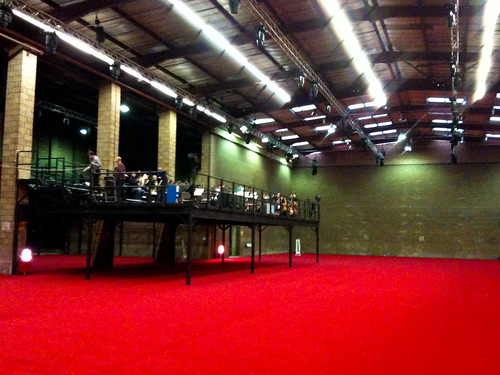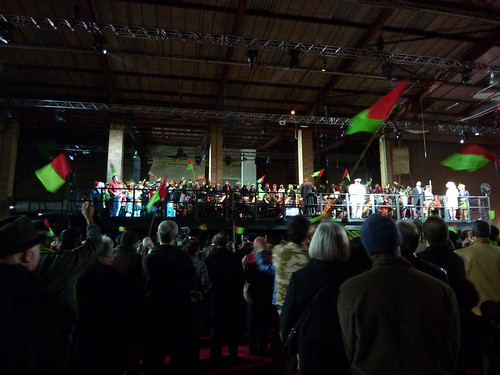story for a flow chart
I’d be really interested in hearing more about who you consider your influences or precursors in installation art – I’m vaguely drawing up an enormous Flowchart Of Pervasive Games And Where They Come From And All That Sort Of Thing, which is obviously never going to be even slightly exhaustive but which might be fun to have around. I don’t have much from installation art there – any suggestions?
Holly in the comments for a previous post
I was pretty rubbish for about the first 2 of my 3 years doing A-Level Art and Design, so I’m guessing this happened in about 1996/7, after a certain rollicking from Hillary regarding some lino prints got me thinking more about process and journey.
I got the train up from Southampton to London to Go And Look At Some Art. I think what I did was to rock up, find a newsagents, have a flick through Time Out and see what looked interesting. …and so I ended up in somewhere I think was probably Mile End.
This was a part of London I’d never been to before and it was all pretty scary. When I finally found the address given in Time Out, the building was big, not at all what I was expecting (like an old town house or civic building of some sort) and very locked looking. In fact, very boarded-up looking…
After a bit of hesitation and hopeful looking around for any indication at all that this might have been a gallery, I plucked up the courage to ring the buzzer indicated by a note attached to the door that might have been referring to the art I was seeking. When the door was opened, and the correct place had been confirmed, I was led inside and it became apparent that the building was well on its way to becoming derelict: I was guided around holes in the stairs and there were bare floorboards and bare wires.
A few storeys up, we came to a door with a small wooden chair placed next to it.
I was to go inside and be careful. The man would be waiting for me outside.
The dark room I stepped into was one of those where there would ordinarily have been 3 or 4 steps down from the door to floor level. However, the artist had constructed his own floor that began at door level and then cut through the room sloping both up and away towards the back of the room and also from left to right. The new floor was made of metal grill, so as my eyes became accustomed to the dark I could begin to make out the cables snaking across the original floor below, a couple of vertical columns piercing up through the grill from below and also some faint light associated with those columns.
I slowly made my way across the metal structure, all the while aware of my location in the middle of the room. Approaching and then looking down into one of the columns, it became apparent that there was a monitor at the bottom showing some video. I can’t remember much about the video, except my impression is that it was a blueish monochrome and the images might have been abstracted shots of human bodies. I don’t recall there being a narrative or a soundtrack (although there might have been sound).
…and that was it, really: a wonky floor and a few monitors you could look down on through rectangular tubes. I was in there for so long that the artist sat waiting outside was wondering whether he should come in and check on me!
When I did finally leave the room, I was invited to chat with the artist for a little while. I’m not sure if he and the other artists working in the building were squatting or not, but he was living – for the time being at least – in a small room not much bigger than the mattress on the floor and cooking from a primus type thing in the corner.
We talked for a bit and then I left to continue my day of art-looking.
I don’t remember anything else I saw that day.
I do, however, remember telling the story of seeing that installation over and over again when I got back to college. My tutors were concerned that I had put myself in danger, and in retrospect I probably had. Fortunately though, it had all worked out fine and for the last year of that A-Level my work was predominantly installation-based and so much the better for it.
***
So, an experience of installation art that had a big influence me. If we’re drawing lines from that day to my thoughts and doings with pervasive games now, it would be tempting to label them thus:
- Following a scrap of tempting information into the unknown.
- Pushing beyond the edge of your comfort zone.
- Putting your trust in strangers.
- Only you and the other thing.
- Experiencing with all the senses.
- Forgotten or overlooked spaces.
- Because we want to make something.
- Sharing the story afterwards.


